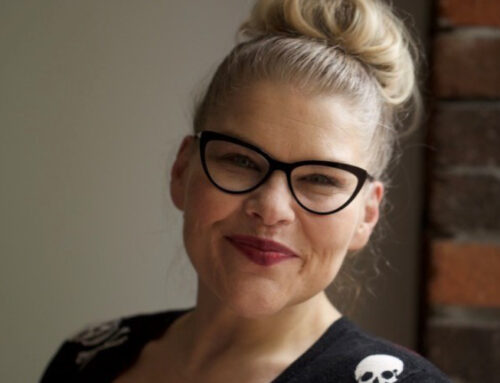The following paper has been prepared by Obesity Canada’s EveryBODY Matters Collaborative: Ximena Ramos Salas, PhD; Sara Kirk, PhD; Angela Alberga, PhD; Mary Forhan, OT/PhD; Shelly Russell-Mayhew, PhD; Erin Cameron, PhD; Sarah Nutter, PhD; Arya M. Sharma, MD/PhD.
The following organizations have provided input and support for this call to action:
- Obesity Canada, Public Engagement Committee
- Obesity Action Coalition
- European Coalition for People living with Obesity
- Riksförbundet HOBS – Hälsa oberoende av storlek
- Obesity UK
- Obesity Medicine Association
- The Obesity Society
- European Association for the Study of Obesity
- Montreal Behavioural Medicine Centre
- International Behavioural Trials Network
- Canadian Association of Health Behaviour Change and Promotion
- Canadian Psychiatric Association
- Health Psychology Section, Canadian Psychological Association
- World Obesity Federation
- Behavioural Medicine Section of the Canadian Psychological Association
- Heart and Stroke Foundation of Canada
- Canadian Association of Bariatric Physicians and Surgeons
- Diabetes Canada
- Canadian Association of Cardiovascular Prevention and Rehabilitation
- Canadian Society of Endocrinology and Metabolism
People living with obesity frequently experience weight bias, stigma and discrimination. This is due in part to the lack of understanding of obesity as a chronic disease characterized by adiposity that impairs health not just body size or high body mass index (BMI). The role that weight bias, stigma and discrimination play in health care has been well documented.1,2 Emerging data indicate that people with obesity may be at higher risk for developing more severe COVID-19 complications, requiring access to critical care.3–6 Based on existing weight bias and disaster management research, there are important implications for healthcare professionals to consider during the COVID-19 pandemic.
Weight bias and obesity stigma in healthcare
It is well documented that some healthcare professionals may endorse weight bias and stigma about patients living with obesity.7,8 There is also strong evidence that patients with obesity perceive biased treatment in healthcare and that these perceptions may influence patient engagement in primary healthcare services.9 People with obesity have reported patronizing and disrespectful treatment from their primary care providers, as well as poor communication, and blaming most health issues on excess weight.1 Existing evidence suggests that healthcare professionals may be spending inadequate time with patients with obesity.10,11 Patients who experience weight bias in healthcare settings may delay or forgo essential preventive care, for fear of receiving disrespectful treatment and negative attitudes from providers.12–14 Stigma and discrimination are also seen as chronic stress conditions attributed to the additional stress that individuals from stigmatized groups are exposed to daily as a result of their position in society.15 Chronic stress has a significant impact on mental health and discrimination-specific stressors should be considered in intervention approaches.16
Providing safe and respectful care for people with obesity requires resources such as trained personnel, supplies and specialized equipment.17 These types of resources are lacking in healthcare systems under normal circumstances. In situations such as pandemics or emergency management, these resources may present additional challenges, such as the need for adequate transportation, critical care protocols and suitable equipment, such as beds and chairs in critical care units for people living with obesity.18 Understanding the intersection between social determinants of health, vulnerability to infectious disease pandemics, obesity and stigma is essential for public health interventions.19 While research on the specific needs of people living with obesity is needed to inform public health pandemic responses, we can infer from previously published literature some potential implications for people with obesity in relation to COVID-19:
- Persons living with obesity may avoid or delay accessing healthcare services when experiencing COVID-19 symptoms for fear of experiencing weight bias and stigma. This may have implications for the level of testing, treatment, and care that patients receive when presenting to hospitals with COVID-19 symptoms. For example, the severity of the coronavirus disease progression may have escalated much further requiring more acute and invasive interventions for people living with obesity.
- Healthcare professionals may act upon biased beliefs and attitudes that may impact the care that people with obesity receive during the COVID-19 pandemic. For example, unconsciously, healthcare professionals may not spend adequate time with patients with COVID-19 who have obesity, which may result in less surveillance of patients with obesity. This could also, in extreme cases, lead to care being denied for people with obesity if resources are under strain. Furthermore, healthcare professionals may demonstrate explicit weight bias by using stigmatizing language or communicating in a judgemental manner with patients living with obesity.
- Healthcare settings may lack adequate protective equipment and other healthcare tools to accommodate staff and patients affected by obesity. This may result in higher risk of spreading of COVID-19 to persons living with obesity (both healthcare professionals and patients).
What can healthcare providers, policy makers and researchers do in the midst of the COVID-19 pandemic:
- Healthcare providers should recognize that past experiences of weight bias may prevent people living with obesity from reaching out for help with COVID-19 symptoms. Delays in accessing care may have consequences for the severity of the disease and implications for critical care needs in people with obesity.20
- Weight bias may negatively affect health professionals’ attitudes and behaviours toward individuals living with obesity. Healthcare providers should assess and reflect on their own attitudes and beliefs related to obesity.12,21–23 We recommend the Implicit Weight Bias Test (https://implicit.harvard.edu/implicit/).
- Healthcare providers should avoid using stigmatizing language24 and practices,1 recognize the complexity of obesity and promote health, dignity and respect, regardless of body weight or shape.
- Healthcare providers should avoid making assumptions about a person’s weight and their health behaviours.1,25
- Healthcare providers should ensure their clinical environment is accessible, safe and respectful to all patients regardless of their weight or size, and ensure they have properly sized equipment (e.g., blood pressure cuffs, protective equipment, chairs, beds) ready in clinical rooms.17
- Public health officers who conduct surveillance on COVID-19 should also investigate the implications of obesity for COVID-19 disease morbidity and mortality.
- Public health researchers should investigate the impact of the COVID-19 pandemic on obesity prevalence and complications, as well as the impact of COVID-related health care system strain (e.g. deferring of non-urgent procedures) on obesity treatment.
- Researchers should report findings beyond body mass index (BMI) when studying the surveillance of COVID-19 and obesity (e.g., pre-existing health conditions and/or disease states, quality of life, socioeconomic status, race, quality of care and timely access to care in hospital, etc.).
- Health services policy makers should work with scientists to ensure that COVID-19 responses reflect emerging evidence about obesity as a potential risk factor for COVID-19 complications and allocate resources to help healthcare professionals to support high-risk populations including people living with obesity.
- Considering that weight bias and stigma impact morbidity and mortality at the population level, governments should develop policies to prevent weight bias and stigma in healthcare settings.26,27
Obesity Canada in collaboration with the Canadian Association for Bariatric Physicians and Surgeons have developed a new clinical practice guideline for the management of obesity in adults. The guideline has been accepted for publication in the Canadian Medical Association Journal and is currently in press. Some of the calls to action described in this statement have been generated from the key messages in the weight bias chapter of the new guideline.
References
- Alberga AS, Edache IY, Forhan M, Russell-Mayhew S. Weight bias and health care utilization: A scoping review. Primary Health Care Research & Development. 2019;20(e116).
- Caterson ID, Alfadda AA, Auerbach P, et al. Gaps to bridge: Misalignment between perception, reality and actions in obesity. Diabetes, Obesity and Metabolism. 2019;21(8):1914–1924.
- Huang C WY, Li X, et al. Clinical features of patients infected with 2019 novel coronavirus in Wuhan, China. Lancet. 2020;395:497–506.
- Chen N ZM, Dong X, et al. Epidemiological and clinical characteristics of 99 cases of 2019 novel coronavirus pneumonia in Wuhan, China: a descriptive study. Lancet. 2020;395:507–513.
- Gupta R GA, Singh AK, Misra A. Clinical considerations for patients with diabetes in times of COVID-19 epidemic. Diabetes & Metabolic Syndrome. 2020;14:211–212.
- Petrilli CM, Jones SA, Yang J, et al. Factors associated with hospitalization and critical illness among 4,103 patients with COVID-19 disease in New York City. medRxiv. 2020:2020.2004.2008.20057794.
- Teachman BA, Brownell KD. Implicit anti-fat bias among health professionals: is anyone immune? International Journal of Obesity & Related Metabolic Disorders. 2001;25(10):1525.
- Alberga AS, Nutter S, MacInnis CC, Ellard JH, Russell-Mayhew S. Examining weight bias among practicing Canadian family physicians. Obesity Facts. 2019;12(6):632–638.
- Mensinger JL, Tylka TL, Calamari ME. Mechanisms underlying weight status and healthcare avoidance in women: A study of weight stigma, body-related shame and guilt, and healthcare stress. Body Image. 2018;25:139–147.
- Hebl MR, Xu J. Weighing the care: physicians’ reactions to the size of a patient. International Journal of Obesity & Related Metabolic Disorders. 2001;25(8):1246.
- Bertakis KD, Azari R. The impact of obesity on primary care visits. Obesity Research. 2005;13(9):1615-1623.
- Olson CL SH, Yawn BP. Overweight women delay medical care. Arch Fam Med. 1994;10:888-892.
- Drury CAA LM. Exploring the association between body weight, stigma of obesity, and health care avoidance. J Am Acad Nurse Pract. 2002;14:554–561.
- Amy NK, Aalborg A, Lyons P, Keranen L. Barriers to routine gynecological cancer screening for White and African-American obese women Int J Obes. 2006;30(1):147–155.
- Himmelstein MS, C IBA, Tomiyama AJ. The weight of stigma: cortisol reactivity to manipulated weight stigma. Obesity. 2015;23(2):368–374.
- Sikorski C LM, Luck T, Riedel-Heller SG. Weight stigma “gets under the skin” – Evidence for an adapted psychological mediation framework – A systematic review. Obesity. 2015;23(2):266–276.
- Bariatric friendly health care service. 2019; https://obesitycanada.ca/resources/bariatric-friendly-health-care-service/. Accessed April 28, 2020.
- Gray LM, C. Morbid Obesity in Disasters: Bringing the “Conspicuously Invisible” into Focus. Int J Environ Res Public Health. 2016;13(10):1029.
- Gray L. Social Determinants of Health, Disaster Vulnerability, Severe and Morbid Obesity in Adults: Triple Jeopardy? Int J Environ Res Public Health 2017;14(2):1452.
- Lee M, Ata, R.N., Brannick, M.T. Malleability of weight-biased attitudes and beliefs: a meta-analysis of weight bias reduction interventions. Body Image. 2014;11(3):251–259.
- Pearl RL, Puhl RM. The distinct effects of internalizing weight bias: An experimental study. Body Image. 2016;17:38.
- Murakami JM, Latner JD. Weight acceptance versus body dissatisfaction: Effects on stigma, perceived self-esteem, and perceived psychopathology. Eat Behav 2015;19:163–167.
- Mensinger JL CR, Tylka TL. Internalized weight stigma moderates eating behavior outcomes in women with high BMI participating in a healthy living program. Appetite. 2016 102:32–43.
- Puhl R, Luedicke J, Peterson JL. Public Reactions to Obesity-Related Health Campaigns A Randomized Controlled Trial. Vol 452013:36–48.
- Kirk SFL, Price SL, Penney TL, et al. Blame, Shame, and Lack of Support: A Multilevel Study on Obesity Management. Qual Health Res. 2014;18(4):501.
- Ramos Salas X, Forhan M, Caulfield T, Sharma A, Raine K. A critical analysis of obesity prevention policies and strategies. Can J Public Health. 2017;108(5-6):e598-e608.
- Puhl RM, Latner JD, O’Brien KS, Luedicke J, Danielsdottir S, Ramos Salas X. Potential Policies and Laws to Prohibit Weight Discrimination: Public Views from 4 Countries. Milbank Quarterly. 2015;93(4):731 741p.






